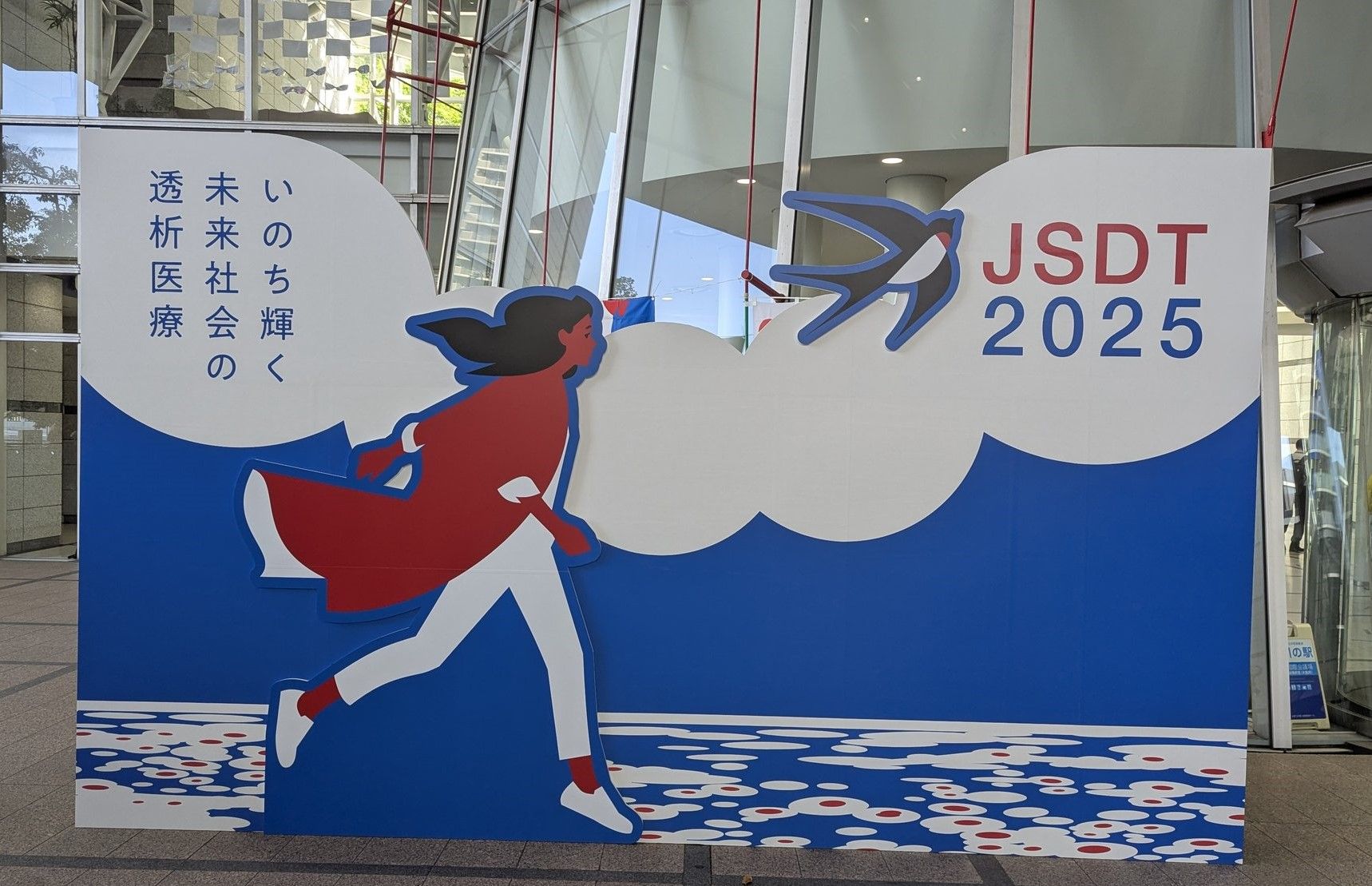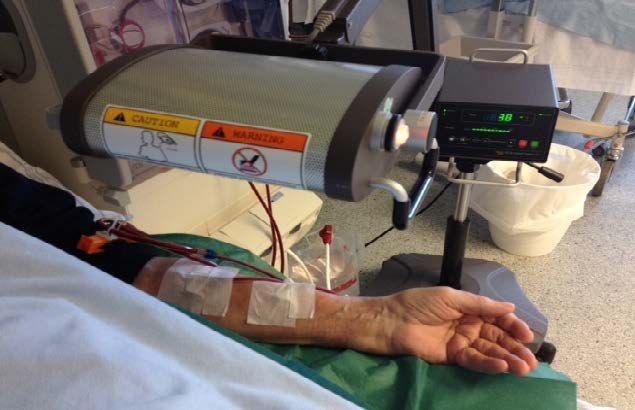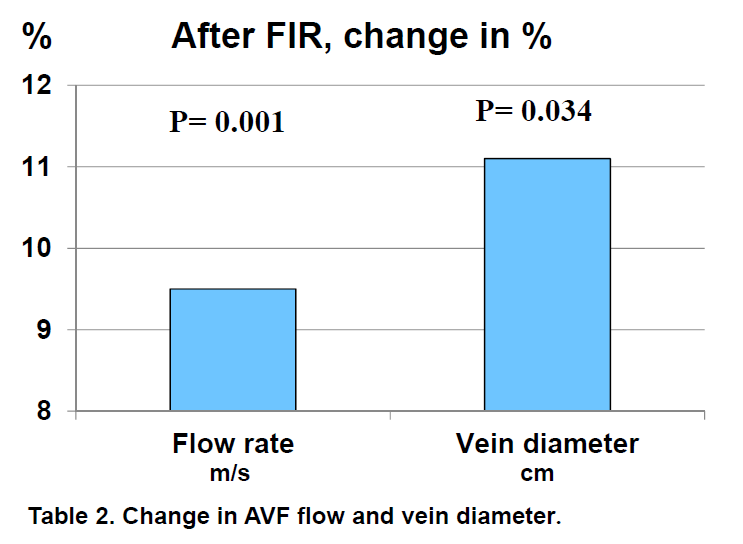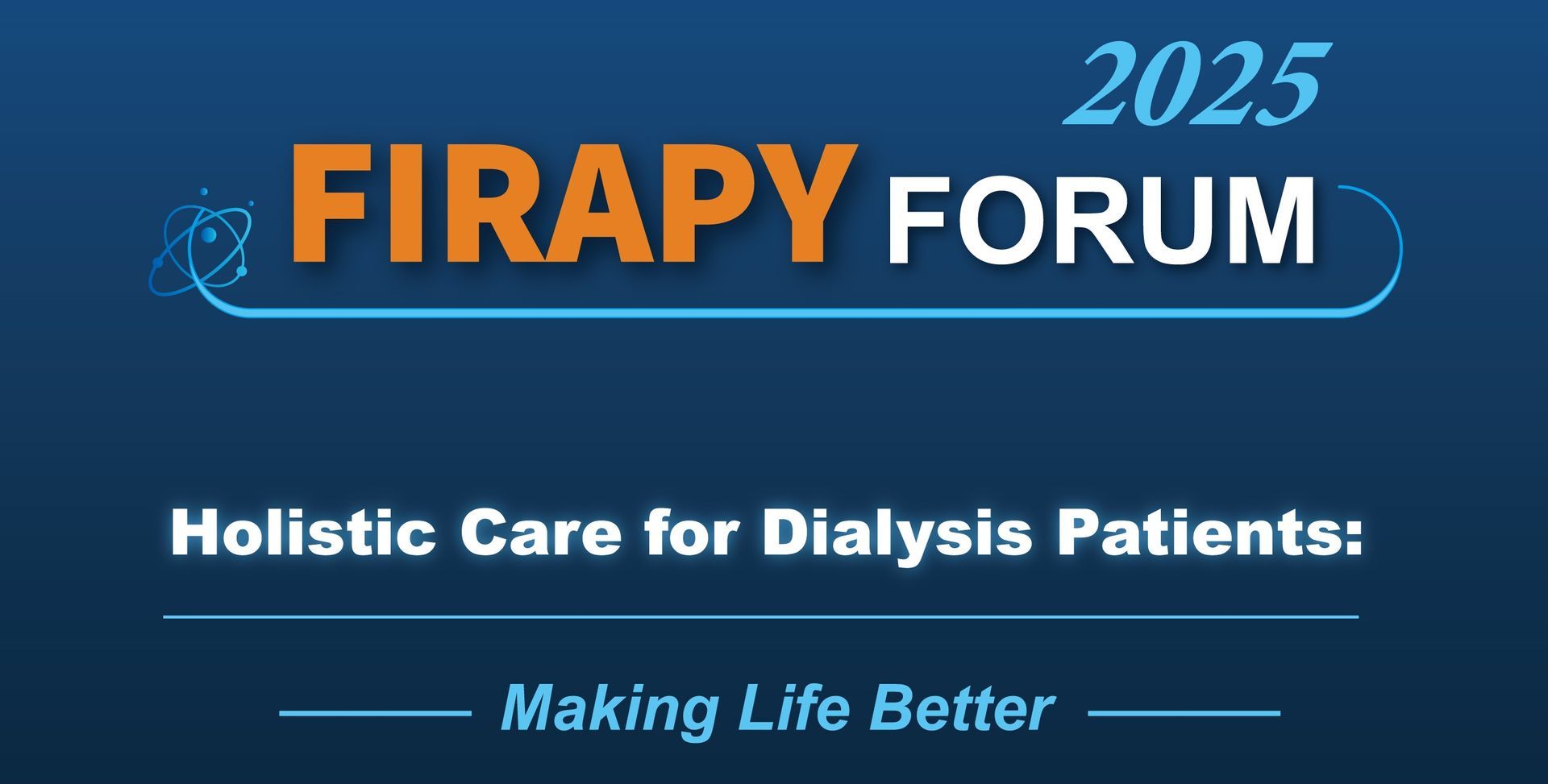Conslusion:Fir treatment increased AVF bloodflow rate and diameter
A single treatment, using Far Infrared light, increased bloodflow and AV-fistula diameter
Background and Aims
A native arterio-venous fistula (AVF) is considered the best alternative for access in patients on chronic hemodialysis(HD). However, its patency is often limited, because of complications, suchas stenosis, thrombosis and infection. Both surgical and medical methods have been evaluated to avoid often painful and costly interventions. In recent years a few studies from the same center have shown positive effects on blood flow and patency of repeated Far Infrared light(FIR) over the AVF.
The primary aim of this study was to evaluate if a single treatment, using FIR, may alter blood flow and AVF diameter.
The secondary aim of the study was to find if there were any changes in inflammatory markers.
Methods
Included were 30patients (17male and13 female) from a single center with a native AVF(end to side) located in the forearm, seetable1.
Ultrasound examination was performed by the same investigator in all patients over three measure points (artery, proximal and distal AVF), followed by one standard FIR treatment and thereafter a repeated examination.
| Variables | Data |
|---|---|
| Number of patients | 30 |
| Male/female ratio | 17 vrs 13 |
| Age, years | Mean 59,9 ±14,2 |
| Hemodialysis (yes/no) | 14 vrs 16 |
| Diabetes (yes/no) | 12 vrs 18 |
| Statine treatment (yes/no) | 12 vrs 18 |
| Anticoagulantia (yes/no) | 8 vrs 22 |
| EPO treatment (yes/no) | 20 vrs 10 |
| Uric acid lowering drug (yes/no) | 3 vrs 27 |
| Duration of fistula (months) | Mean 59,9 ± 42,3 |
| Haemoglobin, g/L | Mean 119.3 ±15,6 |
Table 1. Demographic data
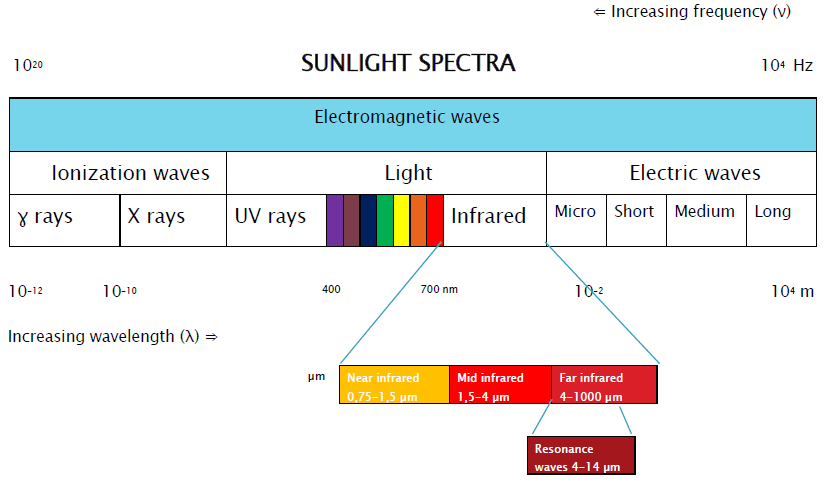
Result
Results: The AVF flow rate increased after one FIR treatment, mean 2.1±1 m/s to 2.3±1, (p=0.001).
There was a slight increase of the arterial and venous flow, however not significant. The diameter of the AVF and artery did not change while the vein became wider 0.72cm ±0.2 to 0.74 ±0.2 ( p=0.034), see table 2.
The change in AVF flow was not different in those with or without diabetes mellitus, hemodialysis,
prescribed statins, hypertensive treatment, anticoagulation or between men and women. The mean
arterial pressure, systolic and diastolic blood pressure did not change. The pulse decreased from a mean of 72 ±9.8 beats/min to 68 ±9.4, (p=0.043). There was no significant change in inflammatory
markers. All patients had a functioning AVF after 30 days.

Author's:
- U. Hadimeri,
- A. Wärme,
- B. Stegmayr
Site:
- Skaraborg Hospital, Skövde, SWEDEN,
- Dept.of Nephrology, Skaraborg Hospital, Skövde, SWEDEN,
- Public Health and Clinical Medicine, Umea University, Umea, SWEDEN
Presented at the 2014 ERA-EDTA Conference.
Want to know more?
Contact us for more detail

